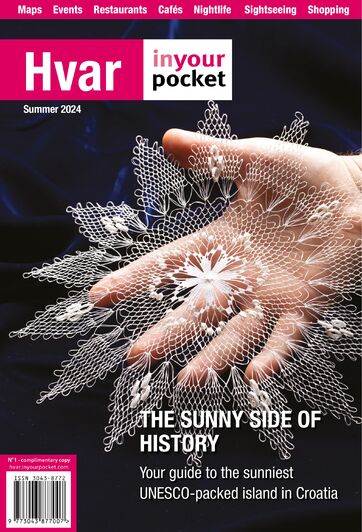At first glance the island landscape gives the impression of being a virgin wilderness made up of prickly Mediterranean shrubs, boulder-strewn slopes and soaring cypresses. Evidence of cultivation past and present are however everywhere, with rows of vines and the silvery-green leaves of olive trees poking up among the maquis. Semi-collapsed piles of stones reveal how in centuries past cultivable land was cleared of rock, which was then collected to form spoil-heaps and dry-stone walls that served to divide up plantings of olives or fruit trees. The dense network of dry-stone walls, still visible on once-farmed slopes that have since been abandoned to the elements, has been dubbed "stone lace" (kamena čipka) in honour of the intricately patterned mark it has left on the land.
Key places to visit on a day out from Hvar Town include Stari Grad, founded by the Greeks in the 4th century BC and preserving a medieval centre of tightly-knit alleys, nowadays full of artists' studios, restaurants and kooky shops. Stari Grad's museum bears witness to the town's past with ancient Greek pottery and amphorae dredged up from the nearby sea bed. The nearby Tvrdalj, the fortified house and garden built by 16th-century noble and poet Petar Hektorović, provides an evocative taste of Renaissance lifestyles. Stari Grad is often thought of as being quieter than Hvar Town, although the extension of its yachting marina has seen it fill up with a chic and swanky clientele in recent years.
Jelsa is a charming port turned tourist resort, tightly wound around a boat-filled bay, with popular beaches at Mina, just east of town, and shallow, sandy Grebišče a few kilometres further on. Jelsa is within walking distance of Vrboska, a cluster of stone houses grouped around cute bridges that is home to an intriguing Museum of Fishing.


